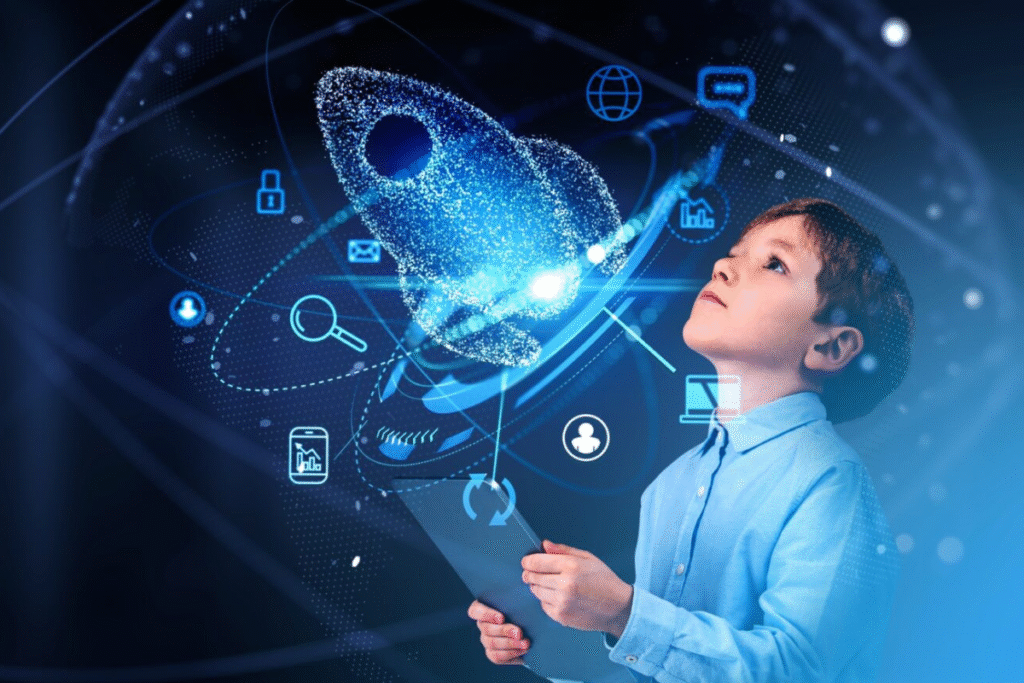How Technology Is Changing Our World
Contents
Technology is transforming the way we live, work, communicate, and even think. From smartphones in our hands to artificial intelligence driving automation, the influence of technology is all around us. Every sector—whether it’s education, healthcare, business, or entertainment—has been reshaped by technological advancements, creating a more connected and efficient world.
One of the most visible changes is how we communicate. Gone are the days when people had to wait for letters to arrive. Now, video calls, instant messaging, and social media allow us to stay connected with anyone across the globe in real-time. This has not only changed personal relationships but has also revolutionized the way businesses interact with clients and employees.
In the field of education, technology has opened up countless possibilities. Online learning platforms, virtual classrooms, and educational apps make knowledge accessible to students from even the most remote regions. This digital revolution ensures that learning is no longer limited to physical classrooms.
Healthcare has also seen major improvements. Telemedicine enables doctors to consult patients online, and wearable devices track health metrics in real-time. Moreover, advanced diagnostic tools powered by AI help detect diseases earlier and more accurately, saving countless lives.
The workplace has undergone a digital transformation as well. Automation and artificial intelligence are taking over repetitive tasks, allowing employees to focus on more creative and strategic roles. Remote working has become normal in many industries, offering flexibility and a better work-life balance.
However, with all these benefits come challenges. Privacy concerns, data security, and overdependence on technology are growing issues. People are becoming more isolated socially, and digital addiction is affecting mental health. It is important that we find a balance between embracing innovation and maintaining human connections.
Technology is changing our world at an unprecedented pace. It brings numerous benefits that improve our lives, but also challenges that we must address responsibly. As we move forward, using technology wisely and ethically will be the key to shaping a better future for everyone.
Top 5 Emerging Technologies in 2025
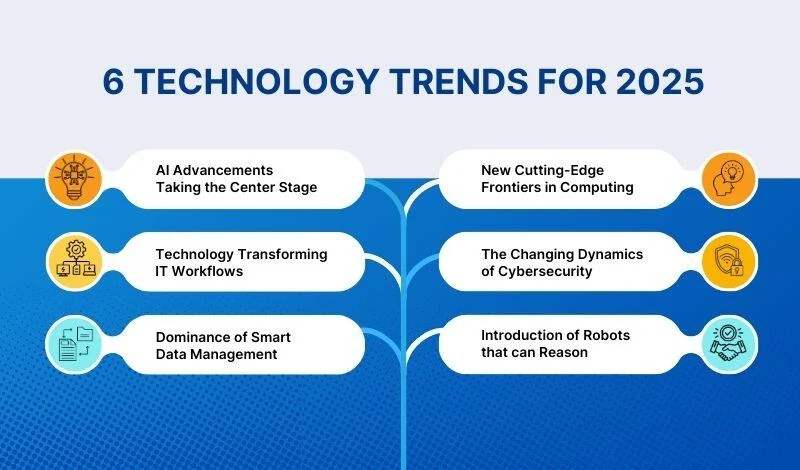
As we step further into 2025, technology continues to evolve at a rapid pace, shaping the future of industries and daily life. Here are the top five emerging technologies in 2025 that are expected to make the biggest impact on the world:
1. Artificial Intelligence (AI) and Generative AI
AI is no longer just about automating tasks—it’s becoming creative. Generative AI, such as ChatGPT and image-generating models, is being used in content creation, design, marketing, coding, and healthcare. In 2025, AI is expected to become more advanced, reliable, and integrated into everyday tools, enhancing decision-making and productivity across sectors.
2. Quantum Computing
Quantum computing, once a concept limited to theory, is becoming more practical. Unlike traditional computers, quantum machines process information at incredible speeds using quantum bits (qubits). In 2025, we will see early-stage quantum computing being used for drug discovery, logistics optimization, and solving complex problems in physics and finance that are impossible for classical computers.
3. 6G and Advanced Connectivity
While 5G is still being rolled out worldwide, research and development for 6G is already underway. Expected to be 100 times faster than 5G, 6G will provide ultra-fast, ultra-low latency connections. This will enable real-time holograms, immersive metaverse experiences, and massive Internet of Things (IoT) ecosystems. In 2025, we can expect early demonstrations and pilot projects.
4. Brain-Computer Interfaces (BCIs)
BCIs are systems that allow direct communication between the human brain and external devices. Companies like Neuralink are leading the charge in developing wearable or implantable devices that could help people with disabilities, enhance memory, or even allow thought-controlled computing. In 2025, BCIs will continue progressing toward practical medical and consumer applications.
5. Sustainable Energy Tech and Green Innovations
Climate change is a global challenge, and 2025 will witness major advances in green technology. Solar panels with higher efficiency, energy-storing batteries, and carbon capture technologies are evolving fast. Green hydrogen, a clean fuel alternative, is also gaining momentum. These innovations are crucial for building a more sustainable future.
What Is Artificial Intelligence and Why It Matters
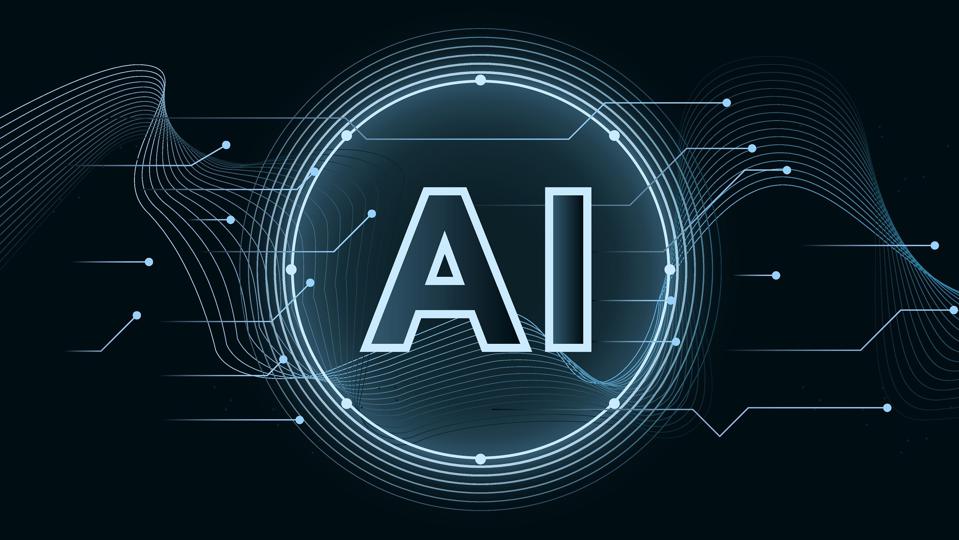
Artificial Intelligence (AI) refers to the ability of machines or computer systems to perform tasks that normally require human intelligence. These tasks include learning, reasoning, problem-solving, understanding language, recognizing patterns, and even making decisions. AI uses algorithms and vast amounts of data to mimic how humans think and act, often with greater speed and accuracy.
There are two main types of AI: narrow AI and general AI. Narrow AI is designed to perform a specific task—like voice assistants (Siri, Alexa), recommendation engines (Netflix, YouTube), or facial recognition systems. General AI, which is still in development, aims to replicate human intelligence in a broader, more flexible way.
AI is becoming a key driver of change in many industries. In healthcare, it helps doctors diagnose diseases faster and more accurately. In finance, AI analyzes market trends, detects fraud, and automates trading. In education, it personalizes learning experiences for students. In transportation, AI powers self-driving cars and traffic management systems. Even in our daily lives, we use AI when we get movie recommendations, translate languages, or use virtual assistants.
So, why does AI matter?
AI has the potential to solve complex problems faster than humans ever could. It can increase productivity, reduce human error, and perform tasks that are too dangerous or time-consuming for people. For businesses, AI can cut costs, improve customer service, and drive innovation. For society, AI can improve healthcare outcomes, make cities smarter, and help tackle global challenges like climate change.
However, with great power comes great responsibility. AI also raises important concerns. For instance, how do we ensure that AI systems are fair and unbiased? How do we protect privacy when so much data is involved? And how do we handle job displacement as AI takes over certain roles? These questions highlight the need for ethical development and regulation of AI technologies.
The Future of Technology: What You Need to Know
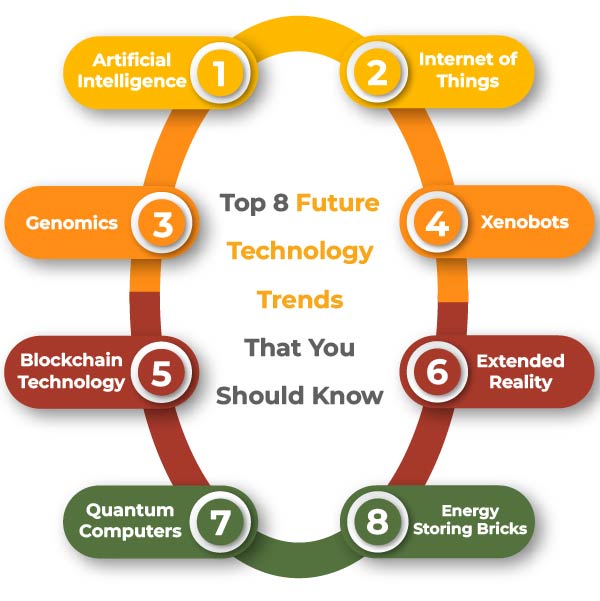
The future of technology is advancing faster than ever, reshaping how we live, work, and interact. From artificial intelligence to space exploration, the next decade promises groundbreaking innovations that will touch every corner of our lives. Understanding these changes is essential to prepare for a future that is not only digital but also deeply intelligent and connected.
One of the biggest drivers of the future is Artificial Intelligence (AI). AI is expected to evolve into more advanced systems capable of real-time decision-making, creative problem-solving, and even emotional understanding. This means smarter healthcare, more efficient transportation, and personalized education experiences. AI won’t just assist us—it will increasingly collaborate with us.
Another major trend is the rise of extended reality (XR)—a combination of virtual reality (VR), augmented reality (AR), and mixed reality (MR). These technologies are set to revolutionize entertainment, gaming, training, and even remote work. Imagine attending a meeting in a virtual space or shopping through an AR-enhanced experience from your living room.
Sustainable technology is also gaining ground. With climate change concerns growing, green innovations like carbon capture, energy-efficient batteries, and smart grids are becoming essential. In the near future, homes will use smart systems to manage electricity, water, and heating—making life more convenient and eco-friendly.
Quantum computing is another game-changer on the horizon. While still in early stages, it has the potential to solve problems that today’s supercomputers cannot. This could lead to breakthroughs in medicine, cybersecurity, and material science.
Additionally, human-tech integration through devices like brain-computer interfaces (BCIs), smart wearables, and biometric sensors will continue to evolve. These technologies could enhance memory, improve physical abilities, or even help people with disabilities regain mobility or communication.
However, with rapid growth come challenges—ethical concerns, job automation, digital security, and privacy risks. As technology continues to shape our future, it’s crucial that governments, businesses, and individuals work together to create responsible innovation that benefits all.
How Smart Devices Are Making Life Easier
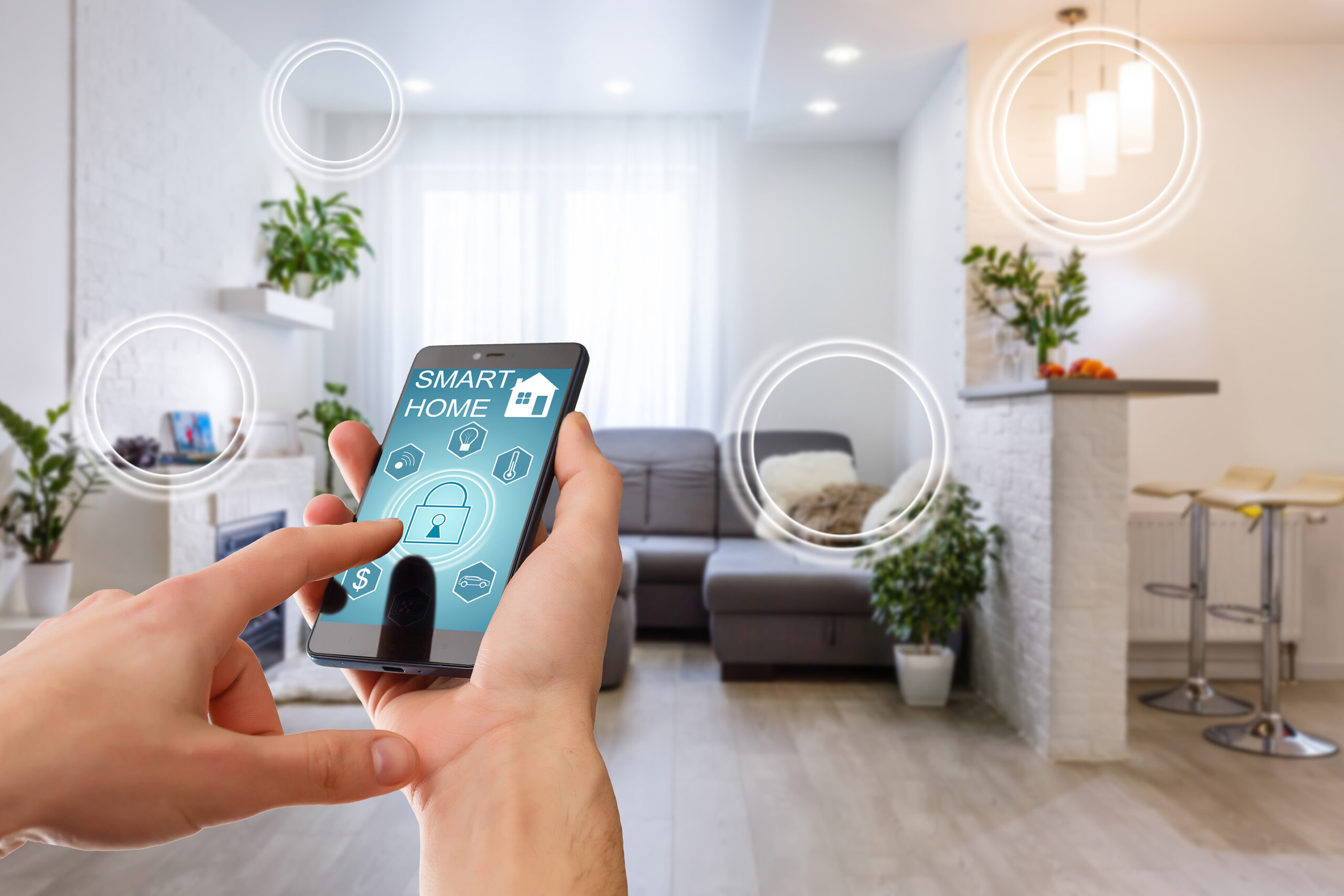
Smart devices have become a part of everyday life, quietly transforming the way we live, work, and interact with our surroundings. From voice-controlled assistants to smart home appliances, these devices are designed to simplify daily tasks, increase efficiency, and improve our overall quality of life.
One of the most common and popular smart devices is the smartphone. It’s more than just a tool for communication—it’s a mini-computer in your pocket. With apps for banking, shopping, navigation, health tracking, and more, smartphones have become essential for managing modern life with just a few taps.
Smart home technology is another major advancement that’s changing the way we live. Smart thermostats automatically adjust room temperature based on our preferences and usage patterns, helping to save energy. Smart lighting systems can be controlled with voice commands or apps, allowing users to turn lights on or off remotely. Even kitchen appliances, like smart refrigerators and ovens, can now help manage grocery lists and cooking times.
Voice assistants such as Amazon Alexa, Google Assistant, and Apple Siri allow users to control devices, ask questions, play music, or set reminders using simple voice commands. These tools are especially helpful for elderly or disabled individuals, giving them more independence and convenience.
Wearable technology, such as smartwatches and fitness trackers, is revolutionizing personal health and wellness. These devices monitor heart rate, sleep quality, physical activity, and even stress levels. They help users stay informed about their health and encourage them to maintain healthier lifestyles.
In the workplace, smart devices have improved productivity and communication. Video conferencing tools, smart projectors, and collaborative platforms allow people to work remotely without losing efficiency. Automation in industries, driven by smart sensors and systems, also helps reduce human error and increases safety.
However, while smart devices offer convenience, they also raise concerns about privacy and data security. As these devices collect personal information, it is important to use them responsibly and ensure data is protected.
Technology in Education: A New Era of Learning

Technology has ushered in a new era of learning, transforming traditional education into a more dynamic, accessible, and personalized experience. From digital classrooms to AI-powered learning tools, education is evolving faster than ever, making it more inclusive and efficient for students and teachers alike.
One of the most significant changes is the rise of online learning platforms. Websites and apps like Khan Academy, Coursera, and Google Classroom allow students to learn at their own pace from anywhere in the world. These platforms provide video lectures, quizzes, and interactive exercises that make learning more engaging and flexible—especially for those who cannot attend traditional schools due to location, cost, or personal circumstances.
Smart classrooms are another important development. Equipped with digital boards, tablets, and interactive software, these classrooms make lessons more interactive and visually appealing. Teachers can use multimedia presentations, live demonstrations, and instant feedback tools to better explain concepts and keep students involved.
Artificial Intelligence (AI) is also playing a growing role in modern education. AI-driven programs can analyze a student’s performance and customize learning paths based on their strengths and weaknesses. This personalized approach helps students understand difficult subjects more effectively and at their own speed.
In addition, virtual reality (VR) and augmented reality (AR) are being used to create immersive learning experiences. Students can take virtual field trips to historical sites, explore the human body in 3D, or simulate science experiments safely—all from their classroom or home. These technologies make learning more hands-on and memorable.
Technology also enhances communication between teachers, students, and parents. Messaging apps, student portals, and video conferencing allow for better collaboration, quick updates, and more parent involvement in a child’s progress.
However, it’s important to recognize the digital divide—not every student has access to reliable internet or devices. Bridging this gap is essential to ensure equal opportunities for all learners in this tech-driven age.
Will Robots Take Over Our Jobs?
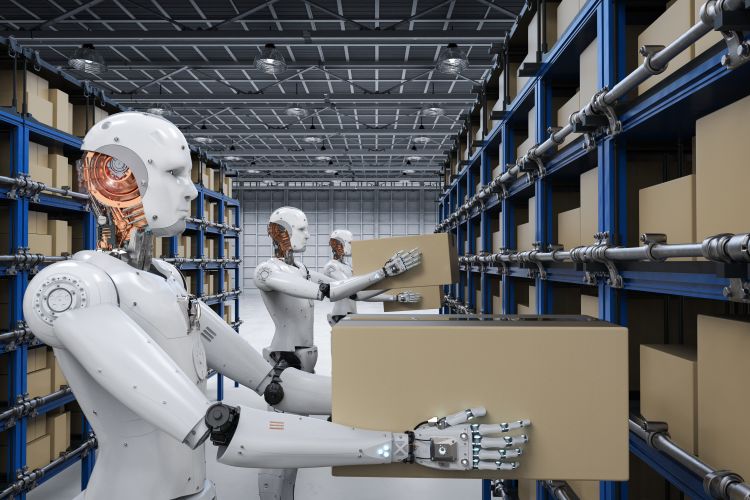
The rise of robots and automation has sparked a major debate: will robots take over our jobs? As technology advances, many people worry that machines will replace human workers, leading to widespread unemployment. While it’s true that automation is changing the job market, the reality is more complex.
Robots and artificial intelligence (AI) are already being used in many industries. In manufacturing, robots assemble products with speed and precision. In retail, self-checkout systems are reducing the need for cashiers. In transportation, self-driving vehicles are being developed to replace human drivers. These examples show that some routine and repetitive tasks are indeed being automated.
However, robots are not likely to replace all human jobs. Instead, they are more likely to change the nature of work. While machines are great at performing repetitive or dangerous tasks, they still lack emotional intelligence, creativity, and complex decision-making skills. Jobs that require human interaction, such as teachers, healthcare workers, artists, and therapists, are less likely to be fully replaced.
In fact, technology often creates new job opportunities. For example, the rise of the internet led to jobs in web development, digital marketing, and cybersecurity—roles that didn’t exist before. Similarly, as robots take over simple tasks, new roles will emerge in robotics maintenance, AI programming, data analysis, and other tech-driven fields.
Education and reskilling will play a key role in the future job market. Workers will need to adapt by learning new skills that complement automation. Governments, schools, and businesses must invest in training programs that prepare people for these changes, ensuring that technology becomes a tool for progress rather than a threat.
It’s also important to note that robots can improve work-life balance by taking over time-consuming tasks, allowing humans to focus on more meaningful and creative work. In healthcare, for instance, robots can assist with surgeries, but human doctors are still needed for diagnosis and patient care.
What Is 5G? Benefits and Risks Explained
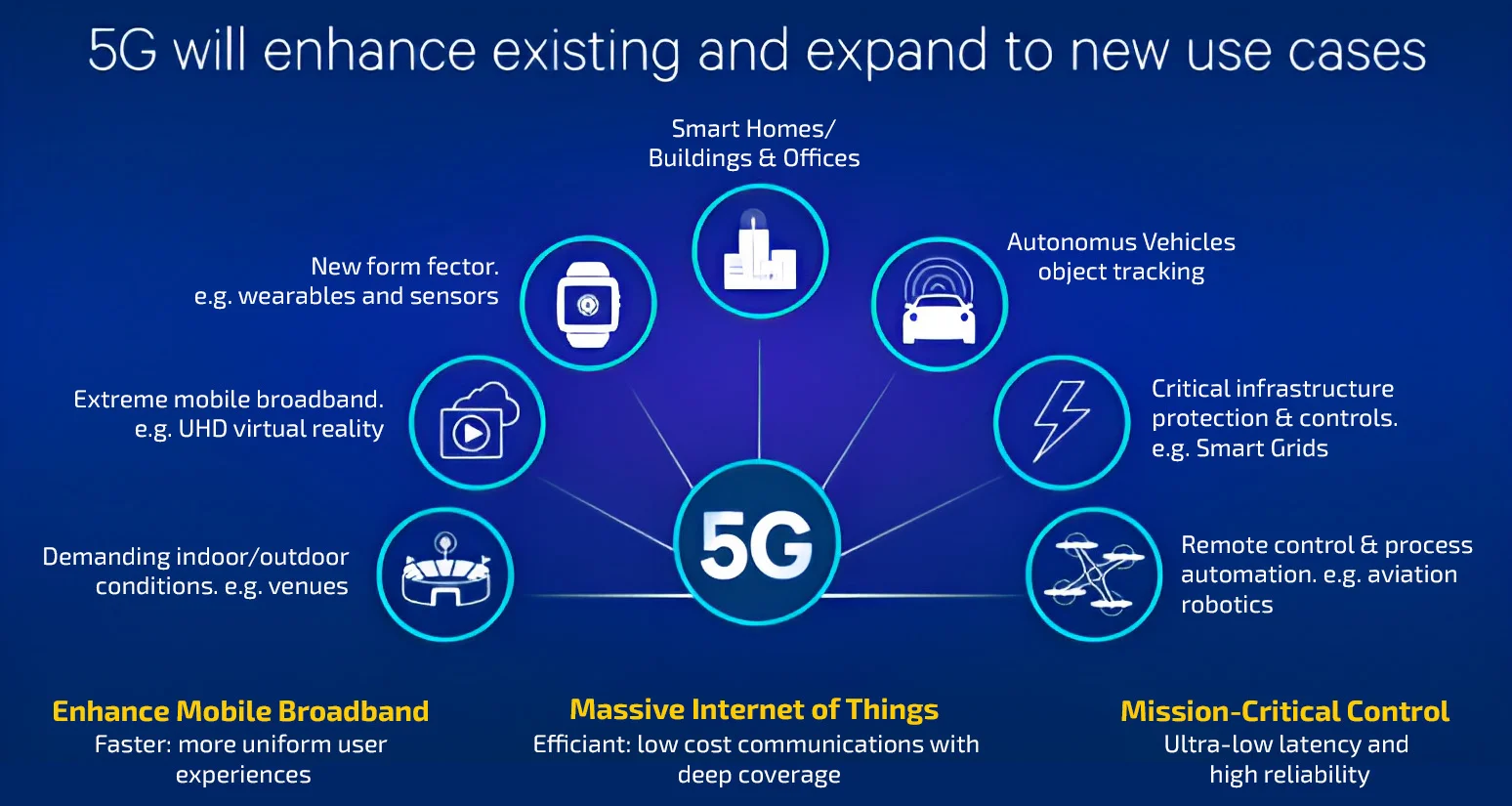
5G stands for fifth-generation mobile network technology, and it represents a major leap in how we connect to the internet and communicate with each other. It is the successor to 4G and is designed to offer faster speeds, lower latency, and more reliable connections across a wider range of devices and services.
Benefits of 5G
One of the biggest advantages of 5G is its ultra-fast internet speed. With download speeds up to 100 times faster than 4G, 5G can stream high-definition videos in seconds and support smooth online gaming without lag. This speed is a game-changer for personal and business use.
Another major benefit is low latency, which refers to the time it takes for data to travel between devices. With 5G, latency can drop to as low as one millisecond, making it ideal for real-time applications such as remote surgery, self-driving cars, and virtual reality experiences.
5G also supports the growth of the Internet of Things (IoT) by allowing many devices to connect simultaneously without affecting performance. This can transform smart homes, smart cities, and industrial automation, making everyday life more efficient and connected.
In industries, 5G enables advanced technologies like remote machinery control, AI-driven services, and real-time data analytics, all of which boost productivity and innovation.
Risks and Concerns of 5G
Despite its benefits, 5G also comes with some concerns. One major issue is privacy and cybersecurity. As more devices connect to 5G networks, the risk of cyberattacks increases. Securing this vast network of data will be a challenge.
There are also health concerns raised by some groups, who worry about the increased exposure to electromagnetic frequencies (EMF) from 5G towers. However, current scientific research, including statements from the World Health Organization (WHO), suggests that 5G radiation levels are within safe limits.
Additionally, infrastructure costs are high. Building a 5G network requires installing many small towers and upgrading existing systems, which can take time and significant investment—especially in rural areas.
How to Build a Career in Technology

Building a career in technology can be exciting, rewarding, and full of opportunities. As the world becomes increasingly digital, the demand for skilled professionals in tech fields like software development, cybersecurity, data science, and artificial intelligence continues to grow. Whether you’re a student, a recent graduate, or looking to switch careers, here are key steps to help you succeed in the tech industry.
1. Identify Your Interests and Goals
Technology is a broad field, so the first step is to identify what excites you most. Do you enjoy coding? Are you fascinated by data or design? Would you prefer working with hardware or software? Understanding your passion will help you choose a clear career path—whether it’s web development, UX/UI design, networking, or machine learning.
2. Learn the Right Skills
Once you’ve chosen a path, it’s important to gain the necessary technical skills. This can be done through university degrees, online courses, bootcamps, or certifications. Platforms like Coursera, Udemy, edX, and LinkedIn Learning offer affordable training in programming languages (like Python, Java, or JavaScript), cloud computing, databases, and more. Constant learning is essential, as technology evolves rapidly.
3. Build Real-World Experience
Practical experience matters just as much as knowledge. Start working on personal projects, contribute to open-source platforms, or participate in coding challenges and hackathons. Internships and freelance work are also great ways to gain hands-on experience and build a portfolio that showcases your abilities.
4. Network with Tech Professionals
Building a strong professional network can open doors to job opportunities and mentorship. Attend tech meetups, webinars, conferences, or join online communities like GitHub, Stack Overflow, and LinkedIn groups. Engaging with others in the industry helps you stay updated and gain valuable insights.
5. Keep Growing and Adapting
Technology is always changing, so a successful tech career requires a mindset of lifelong learning. Stay informed about new tools, trends, and industry demands. Consider earning advanced certifications or learning about emerging fields like blockchain, AI, or cybersecurity.
Cybersecurity: How to Stay Safe in the Digital World

In today’s connected world, where we rely on the internet for everything from banking and shopping to communication and work, cybersecurity has never been more important. As technology advances, so do the tactics of cybercriminals. Protecting your digital life is essential to keep your personal information, money, and privacy safe.
What Is Cybersecurity?
Cybersecurity refers to the practice of protecting computers, networks, and data from unauthorized access, cyberattacks, and damage. This includes securing everything from your personal devices to large corporate systems. Common cyber threats include malware, phishing, ransomware, and data breaches.
Why Is It Important?
Cyberattacks can happen to anyone—individuals, small businesses, or global corporations. A single weak password or careless click can lead to identity theft, financial loss, or stolen data. With more people working remotely and using online services, digital security has become a daily necessity.
Tips to Stay Safe Online
Use Strong, Unique Passwords
Avoid using simple or common passwords. Use a combination of letters, numbers, and symbols. Consider using a password manager to generate and store complex passwords securely.
Enable Two-Factor Authentication (2FA)
2FA adds an extra layer of security by requiring a second verification step (like a code sent to your phone) in addition to your password.
Beware of Phishing Scams
Don’t click on suspicious links or download attachments from unknown emails. Cybercriminals often use fake messages that look like they’re from trusted sources to trick you into sharing information.
Keep Software and Devices Updated
Regular updates fix security bugs and protect you from the latest threats. Always update your operating system, apps, and antivirus software.
Secure Your Wi-Fi Network
Change your router’s default settings, use a strong password, and enable network encryption to prevent unauthorized access.
Be Careful on Public Wi-Fi
Avoid accessing sensitive accounts or making online purchases when connected to public Wi-Fi. Use a VPN (Virtual Private Network) for better protection.
FAQs
What is technology?
Technology refers to tools, machines, systems, and methods developed to solve problems, improve efficiency, and make tasks easier. It includes everything from smartphones and computers to AI and space exploration.
How is technology changing the world?
Technology is transforming communication, education, healthcare, business, and entertainment. It enables faster information sharing, smarter automation, remote work, virtual learning, and innovations like self-driving cars and smart homes.
What are some top tech careers to pursue?
Popular and in-demand tech careers include software development, data science, cybersecurity, AI/machine learning engineering, cloud computing, and UI/UX design.
What is Artificial Intelligence (AI)?
AI is the simulation of human intelligence in machines that can learn, reason, solve problems, and make decisions. Examples include virtual assistants, recommendation systems, and self-driving vehicles.
What is 5G, and why is it important?
5G is the fifth-generation mobile network that provides ultra-fast internet speeds, low latency, and greater connectivity. It supports real-time applications like remote surgery, smart cities, and the Internet of Things (IoT).
How can I protect myself online?
To stay safe online:
Use strong, unique passwords
Enable two-factor authentication
Keep devices and apps updated
Avoid clicking on unknown links
Use antivirus and firewall protection
Will robots replace human jobs?
Robots and AI may replace some repetitive jobs, but they also create new roles and opportunities. Human skills like creativity, empathy, and critical thinking are still in high demand.
What is the role of technology in education?
Technology enhances learning through online courses, digital classrooms, virtual simulations, and personalized content. It makes education more accessible and interactive.
What are the risks of using smart devices?
Smart devices may pose risks such as data privacy concerns, hacking, and over-dependence. It’s important to secure them with strong passwords and keep them updated.
How do I start a career in technology?
Start by identifying your interest area (e.g., coding, data, design), learn relevant skills through courses or bootcamps, build a portfolio, and gain real-world experience through internships or projects.

